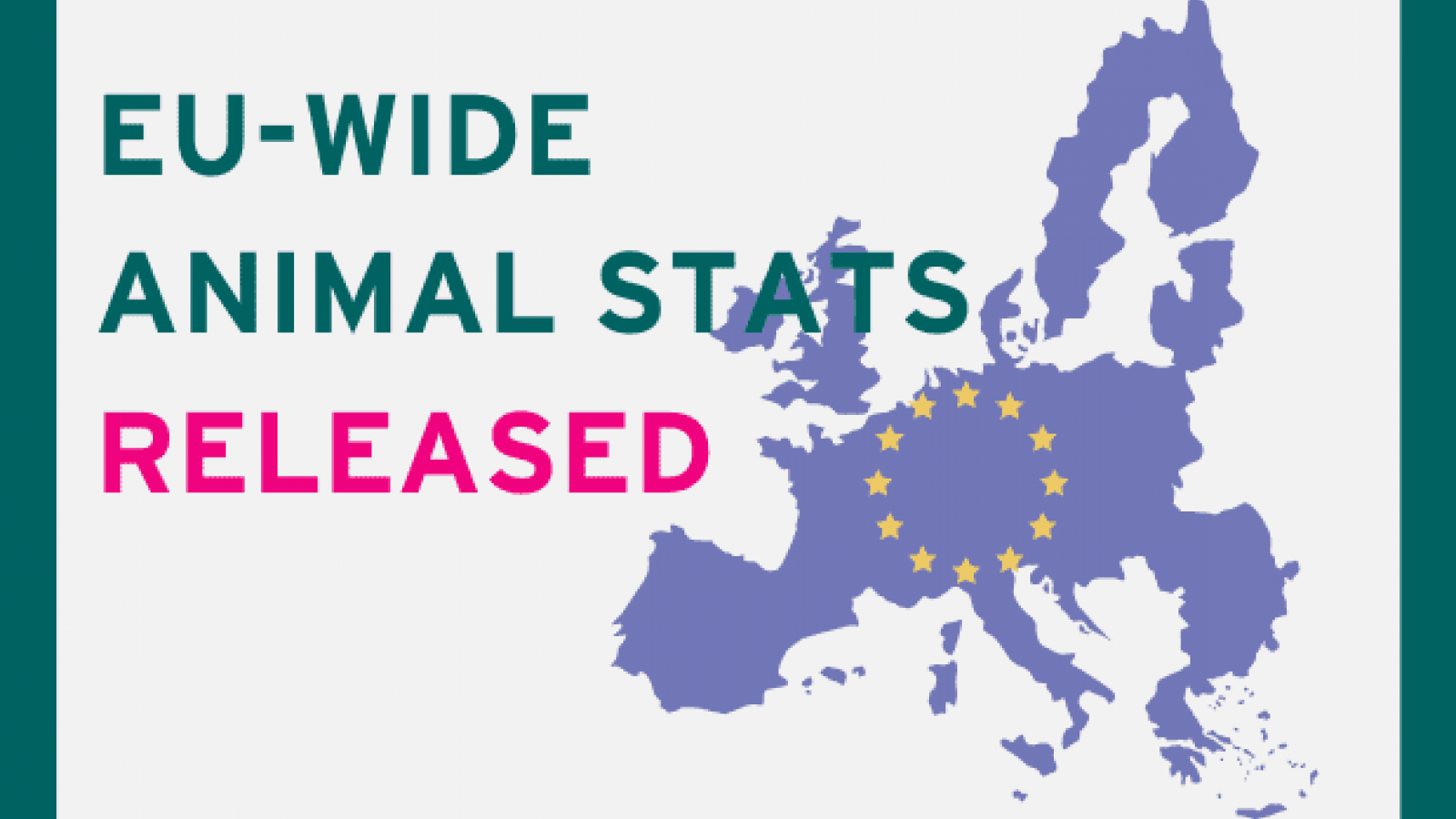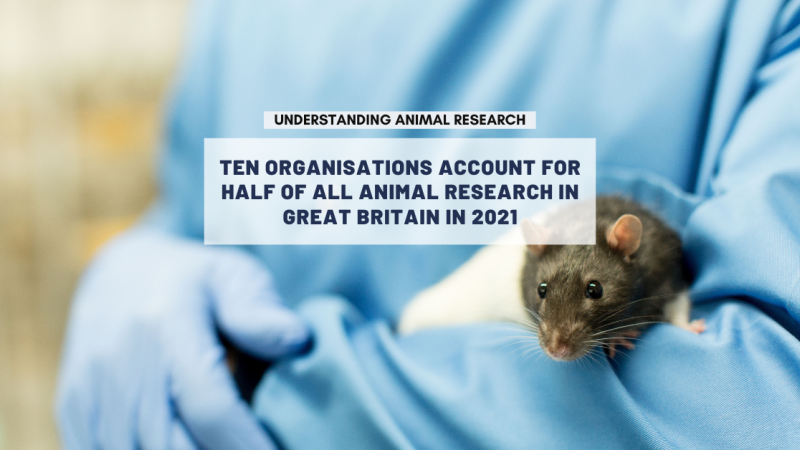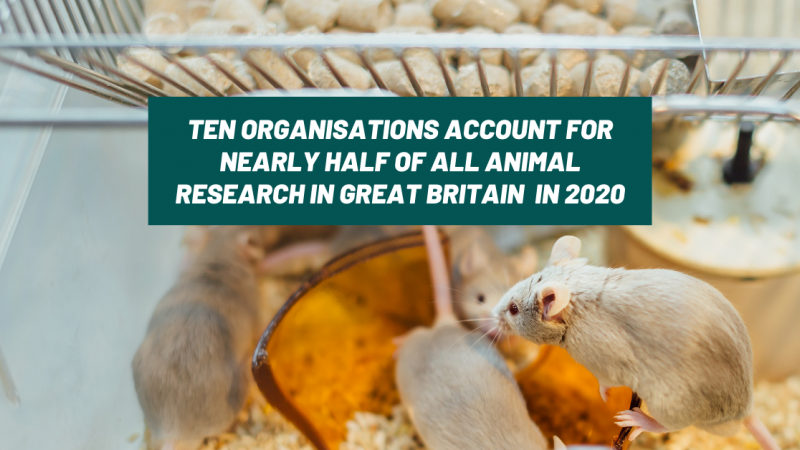EU-wide animals in research statistics for 2017 released
- 10,664,749 animals used for research in the EU in 2017
- Mice, fish, rats and birds account for 92% of animals used
- Cats, dogs, and primates account for 0.25%
- The UK was the highest user of animals
The European Commission has released its ‘report on the statistics on the use of animals for scientific purposes in the Member States of the European Union in 2015-2017’.
The report, which is a first of its kind, details the number of animals used for scientific, medical and veterinary research across 28 Member States, including the UK, for 2017.
In 2017, 10,664,749 animals were used for research in the EU. Of these, 9,388,162 animals (88%) were used for experimental purposes while 1,276,587 animals (12%) were used for the creation and breeding of genetically altered animals not used for experimental purposes.
The three EU countries with the highest animal use for experimental purposes in 2017 were the UK (1,839,079 animals used, 20%), Germany (1,793,299 animals used, 19%) and France (1,757,837 animals used, 19%).
Experimental purposes
|
Species |
Number of animals used for the first time, in 2017, for experimental purposes |
% of total |
|
Mice |
5,707,471 |
60.79% |
|
Fish |
1,219,695 |
12.99% |
|
Rats |
1,146,299 |
12.21% |
|
Birds |
563,963 |
6.01% |
|
Other animals |
726,932 |
7.74% |
|
Primates |
8,235 |
0.09% |
|
Cats |
1,879 |
0.02% |
|
Dogs |
13,688 |
0.15% |
|
Total |
9,388,162 |
100% |
92% of animals used for experimental purposes were mice, fish, rats, and birds. While cats, dogs and primates accounted for less than 0.25% of research.
Some animals are used more than once during research and in 2017 there were 9,581,741 procedures carried out on animals for experimental purposes.
|
Severity |
Number of procedures in 2017 for experimental purposes |
% of total |
|
Non-recovery |
621,054 |
6.48% |
|
Mild (up to and including) |
4,865,721 |
50.78% |
|
Moderate |
3,071,828 |
32.06% |
|
Severe |
1,023,138 |
10.68% |
|
Total |
9,581,741 |
100% |
More than half (51%) of experimental procedures were classed as (up to and including) mild. A mild procedure may cause short-term mild pain, suffering or distress and/or minor changes in well-being or condition, for example, taking a blood sample.
Of the 9.58 million experimental procedures carried out on animals, 45% were carried out for basic research, 23% for translational and applied research, and 23% for regulatory purposes to satisfy legislative requirements. Since 2013, it has been illegal to sell or import cosmetics anywhere in the EU where the finished product or its ingredients have been tested on animals.
Additional animals
The Commission also announced that 12,597,816 animals were bred but not used in scientific research, in the EU, in 2017. These animals were not used in scientific procedures for one or more of the following reasons:
- they were breeding animals (i.e. wild types) that underwent no procedures themselves
- they were not subjected to regulated procedures but were used to provide tissue only i.e. genotyping
- they were the wrong gender for a particular purpose
- they were a necessary surplus resulting from the breeding of animals to ensure adequate supply for scientific purposes
Of the 12.6 million animals bred but not used, 83% were mice, 10% were fish and 4% were rats. When combined with the 10,664,749 animals used for scientific research, the total number of animals used in support of EU research in 2017 is 23,262,565.

UK statistics
Since supplying their figures to the EU, some countries, including the UK, have also published statistics for 2018. Statistics on animals use in 2018 for the UK can be found here for Great Britain and here for Northern Ireland. Going forwards, the EU will publish these EU-statistics annually.
In the EU animal research is strictly regulated under the EU Directive 2010/63. Every procedure, from a simple blood test to major surgery, requires individual, establishment and project licences, as well as approval from animal welfare and ethical review bodies.
All organisations are committed to the ‘3Rs’ of replacement, reduction and refinement. This means avoiding or replacing the use of animals where possible; minimising the number of animals used per experiment and optimising the experience of the animals to improve animal welfare.
Last edited: 27 October 2022 18:29




